PERSONAL INVESTIGATION
BUNKER ARCHEOLOGY
PERSONAL INVESTIGATION
BUNKER ARCHEOLOGY

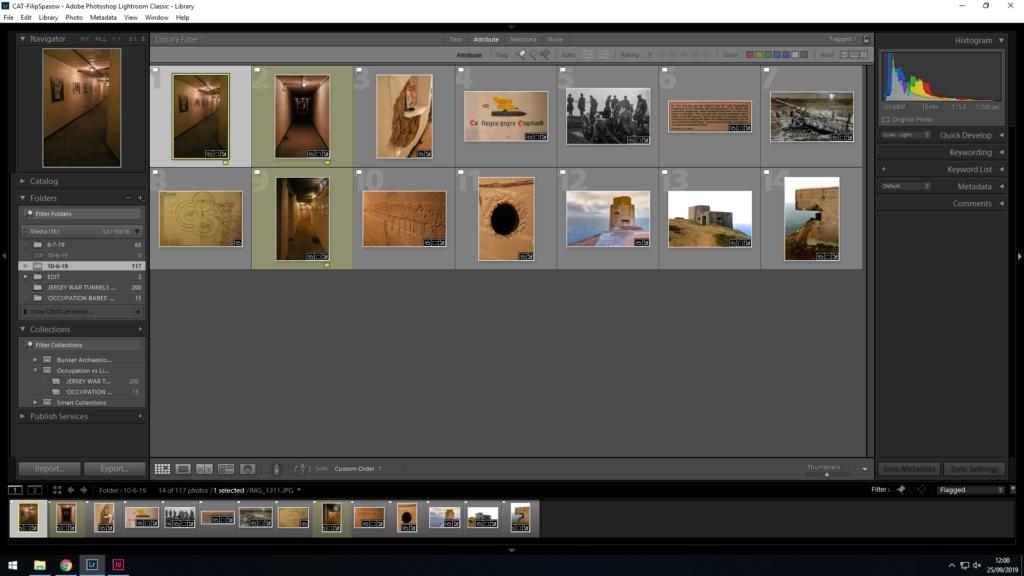

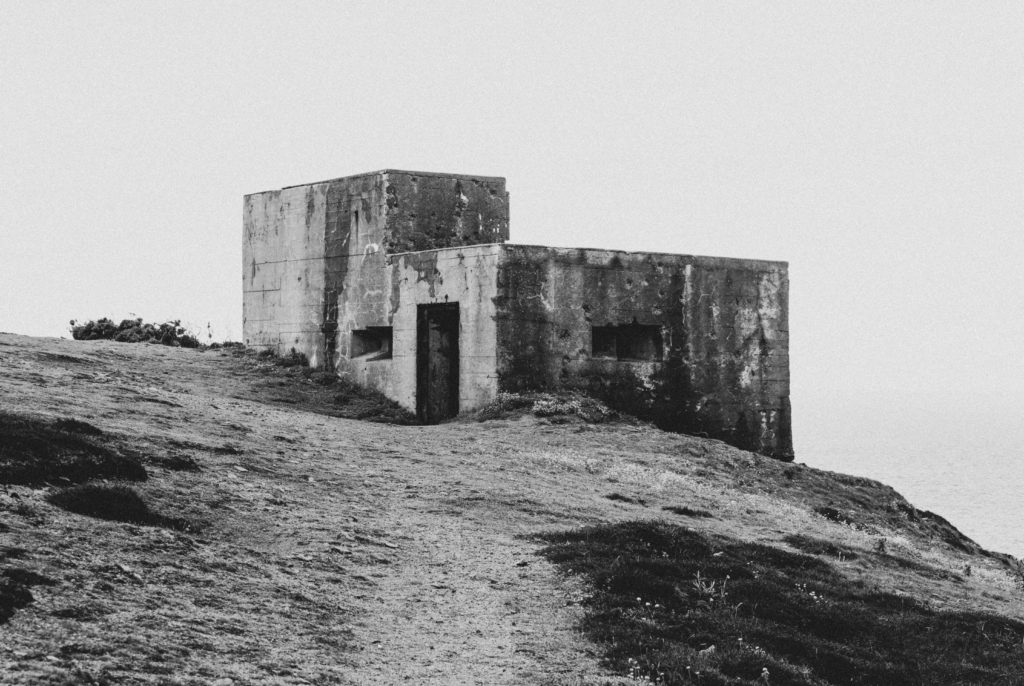

Archives take old text, images, books, notes, etc. and store them so that not only can future generations learn about the past, but it also helps keep an accurate record of events, people, objects and other documents from different points in history.The purpose of an archive is to keep a collection of original documents safe as well as keeping an accurate record of the past using different kinds of documents. Many archives are now making their documents digital by scanning them into a computer in order to digitally preserve them in case something happens to the original copy. This also means that more people can access these documents in order to do research.
Archives can also show how people have developed over long periods of time. Archives provide relevant and reliable evidence by acting as repositories, which means they are similar to a server which contains sets of packages, and these packages hold information on events that happened through history. This means that people can access sets of information from documents to pictures relating to a single event in the past.
Photography plays multiple roles when it comes to archives, as they can not only so accurate depictions of buildings, vehicles, and other older objects. As well as this, photography was also used to document landscapes so people can see the change from the modern day. Photos also show certain lifestyles and people that were living at the time, which is especially useful when it comes to the occupation.Looking at archival material will help enrich my personal projects and study, as it shows a vivid glimpse into the past, which i can use to get insight regarding photographers in the past. It will also help with my study knowing the style of a lot of these photographs, as many of them use quite a deep focus with fairly little bokeh.
I think that looking at these archives has been resourceful in terms of seeing the kind of events that happened in the past in such detail. I think this will help me throughout the project surrounding the occupation, as i will have some reference points using many of the photos from the archive (of which i have photos of on my phone) as well as other that i can obtain from Société Jersiaise.I have learned of the importance of archival photographs during the visit to Société Jersiaise, as they keep an accurate record of not only what the world looked like in the past, but the people in it, and also how much things have changed.
Archives are used to store peoples memories and preserve them so that the past is not forgotten. Archival organisations preserve archives and pieces of history for the public to use and look at the past.Archives contain primary source documents that have accumulated over the course of an individual or organization’s lifetime, and are kept to show the function of that person or organization. And also its a place where people can go to gather firsthand facts, data, and evidence from letters, reports, notes, memos, photographs, and other primary sources. they also keep records of many forms including correspondence, diaries , financial and legal documents, photographs and film. Most state governments, schools, businesses, libraries, and historical societies maintain archives. people also use archives in their everyday lives to create and store information about their personal and business activities and archivists identify and preserve these documents if they are of lasting value. In reality photographs are not objective and they are highly influenced by the perspective of the photographer so it makes people sometimes question whether the photograph is true or not? while the real question should be what does a specific photograph do? Because it can effectively represent an interaction with human memory and culture even if it contains biases or misrepresentation.

Due to Jersey being located between England and France it has a broad and rich photographic history. The local Societe Jersiaise photographic archive alone includes over 80,000 historical images dating back to mid 1900s.
Data archiving is the process of moving data that is no longer actively used to a separate storage device for long-term retention. Archive data consists of older data that remains important to the organization or must be retained for future reference or regulatory compliance reasons.
Archives are made also for normal people with access to phones or media to store day to day memories like photos or videos so these will never be forgotten, also theyre used for advertising, news, documentary, fine art, identity and anthropology. And one of their biggest abilities is providing visual history, knowledge and power.
To help me explore archives i asked my own parents to look up old photographs, documentaries or anything that can make up an archive of my past. My grandmother told me that she keeps an archive of my life in Jersey and it was a folder containing everything from my first ever vehicle to photographs of my travels around the island. I liked the archive because in years to come i can look back at the archive and remember how i used to live. And this is why archives interest me. The only problem with these kinds of archives is that they can be damaged or lost because it is just a folder with paper after all. So that’s where virtual archives come in handy as an online archive cannot be lost s easily except if of course you forget the password for some reason…or the data itself is held by an unco-operative body.

So there is no specific answer to whose archive is it as for example i am the creator of this blog post so to me i think this archive with the images in them belong to me but in the same time all my blog posts are under the control of a “gatekeeper” which is the company or source that runs the website so they might consider my blog posts as theirs so their is no real answer to the question in the end.
On a day out for a photography trip, we went to Batterie Moltke in St.Ouens, and visited the German sites built across the coast. This included bunkers and gun emplacements which were used in the war. During this time we were taken on a tour where we learnt the history of these places and were shown pictures taken back when the second world war was still happening in Jersey, which was an interesting experience.
About Battery Moltke:
Battery Moltke located at Noirmont Point on the Channel Island of Jersey and was built by the German army in 1942.
French Guns from 1917 were re-used by the Germans and placed there. They were placed in open concrete posts and were able to defend St. Ouen Bay. They were also able to engage targets on the rest of the island.
In August 1944, the alarm went off in the gun battery when the British destroyer HMS Onslaught, in process of attacking a German convoy, came within range of the battery. Along with 3 other gun batteries, the Germans opened fire and HMS Onslaught withdrew.
After the war, the British dismantled the guns and threw them out over the cliffs. They have since been restored and are on display today.
Contact sheets of photos taken at Battery Moltke:




Using Lightroom, I took these images and went through a selection process to see which images I would be willing to use for the theme.
Process:

The first step o my selection process is that I go through each image one by one and flag them. The images which are marked with the black flag with the cross means that i’m not interesting in using it, while images with the white flag means that there is a chance that I could use them at some point. I’m doing this to just narrow down my options to find my final few images which i’m sure that I will use.

The second process I went through is that I rated the images which I flagged white, with starts going from 1 to 5 on how much I like them. I mainly used 2 and 3 stars though, and didn’t rate the ones which I didn’t like. I then went and colour coded them, with the colour yellow meaning that I might use it and with green meaning there is a big chance I will use it.


With the filter functions, I can separate the colour coded images. So when i want to see my images which are colour coded yellow or green I can turn the filter on and make my selection from that.

Our first task, to select the images we wanted to use, (the white flag), and deselect the images we didn’t want to use (Black flag).

The second edit, involved comparing pictures and giving them a rating, as you can see from this picture i have rated 3-4 images out of these selection.

Thirdly, we used the colour tool to select the images we liked (Green), and the ones which we weren’t going to use (Yellow)
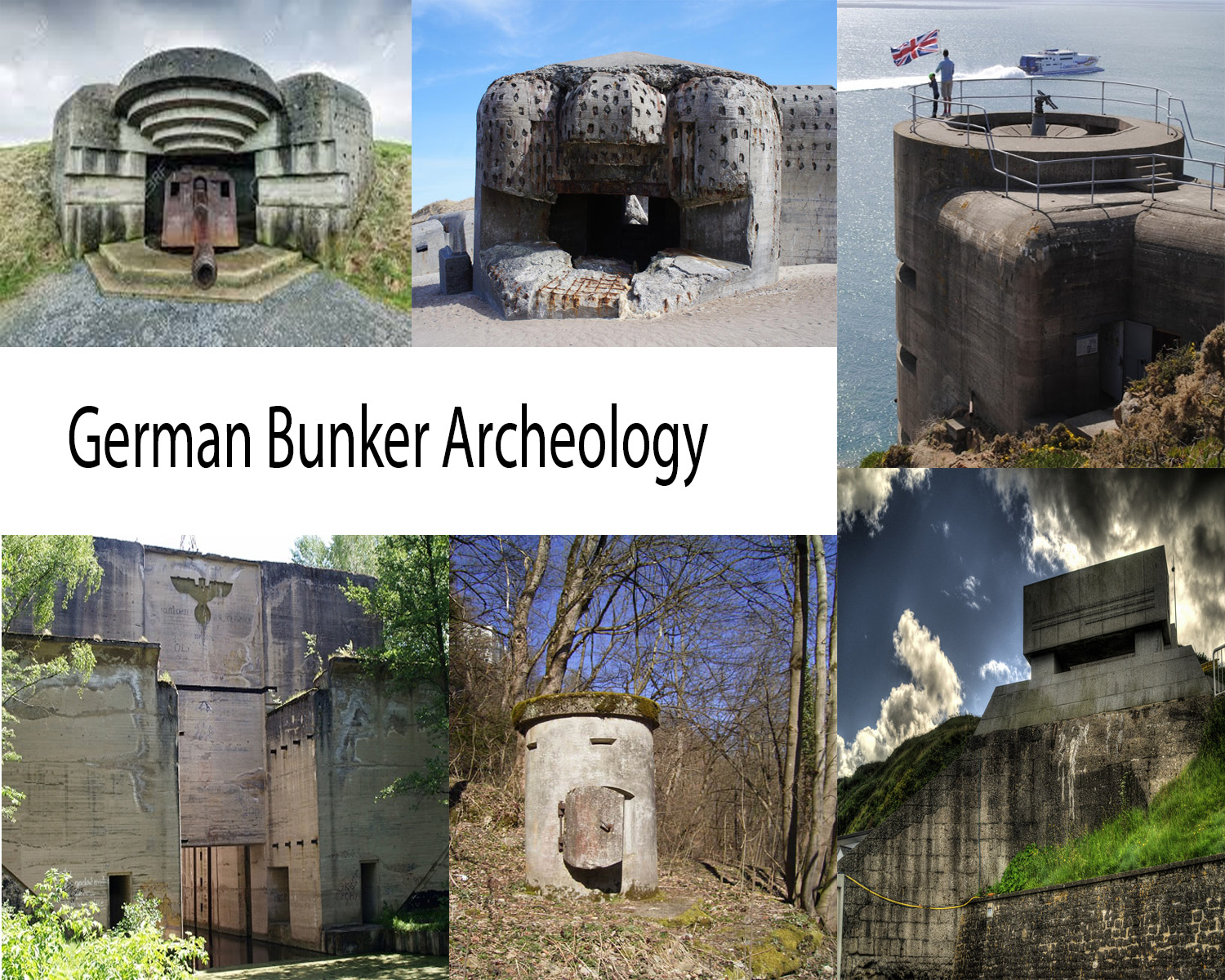
For my A2 theme in photography, I will be looking at the German Occupation and the war. To start off my project, we went to the Société Jersiaise to look deeper into the war and to look at interesting pictures taken during the time.
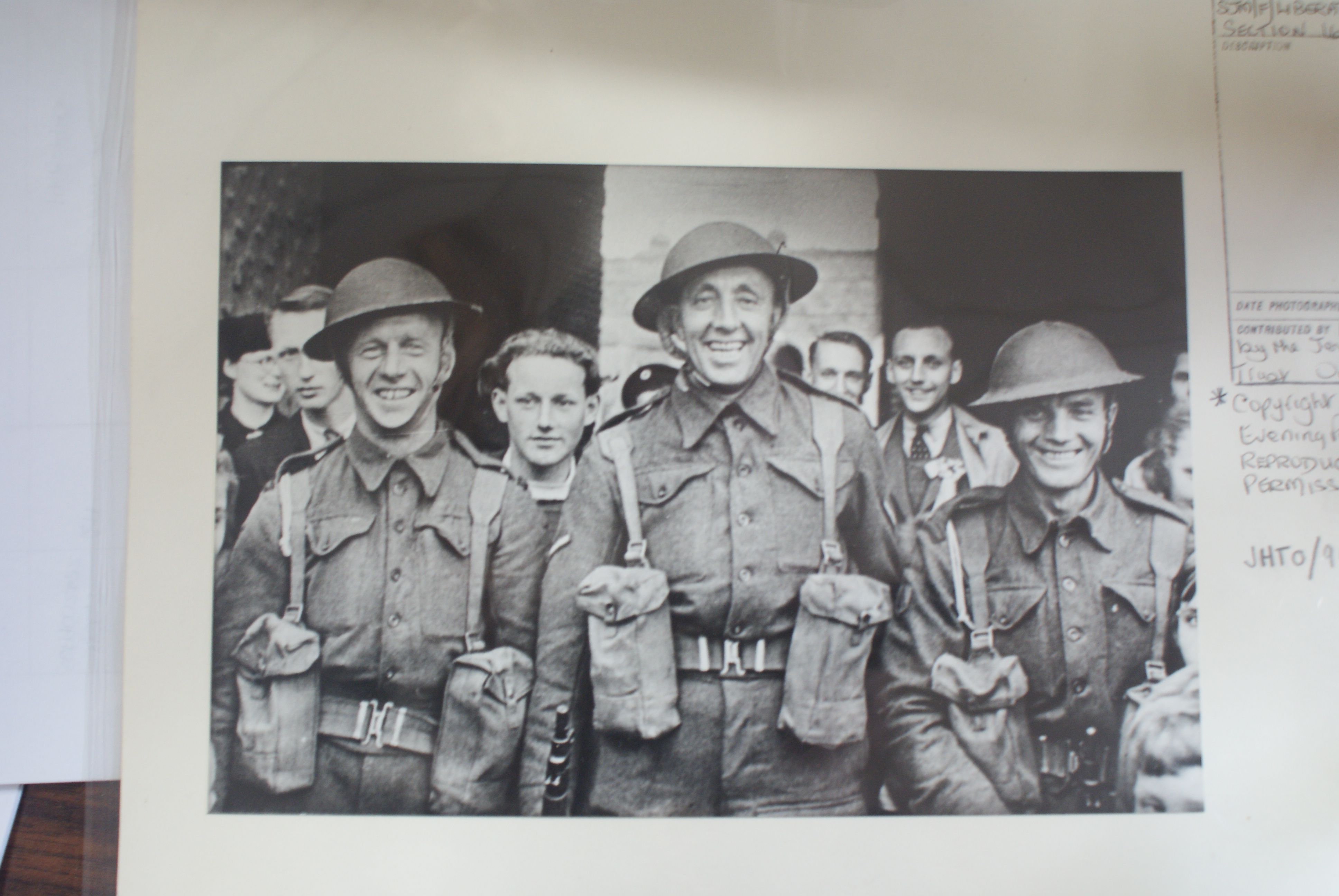

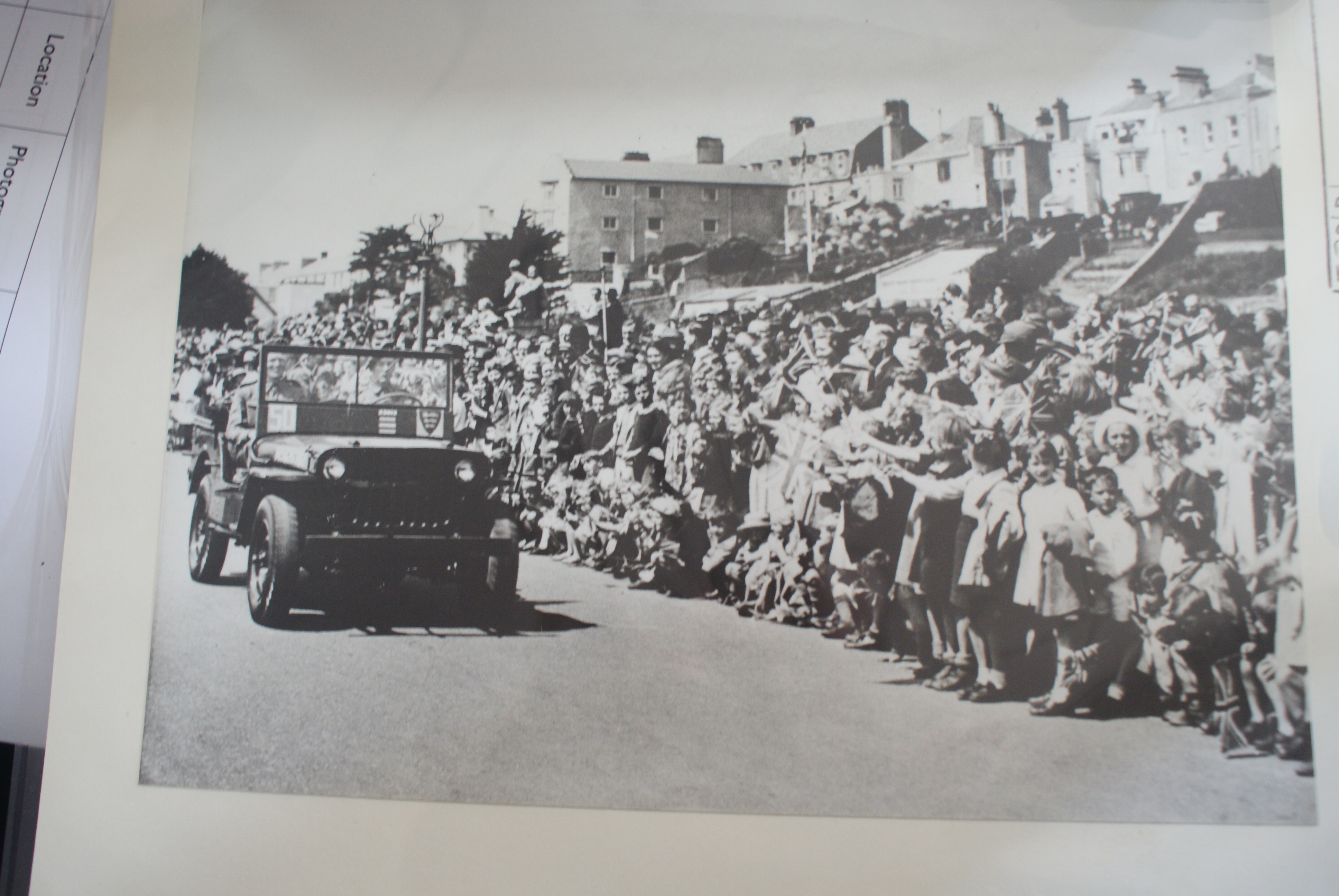
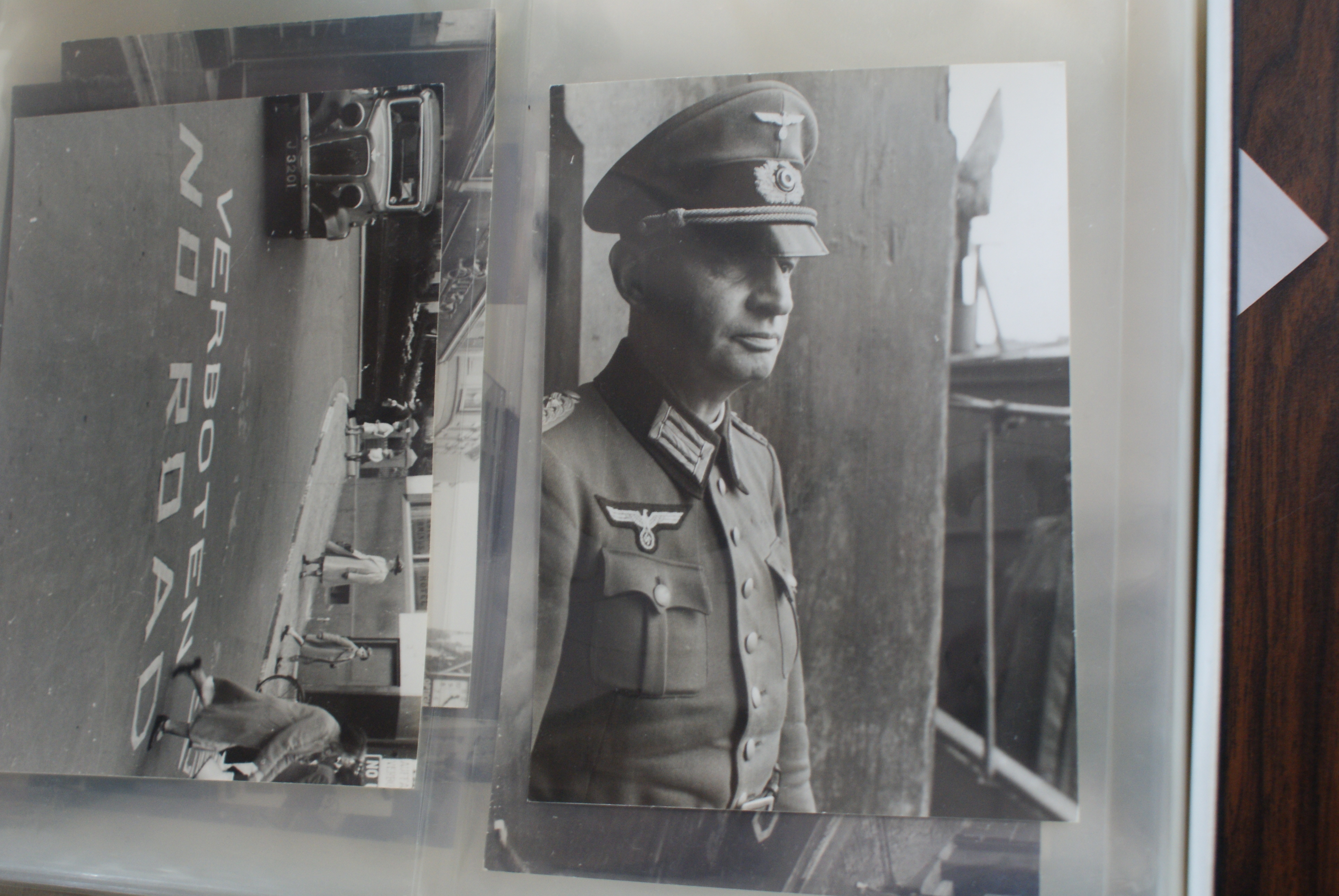
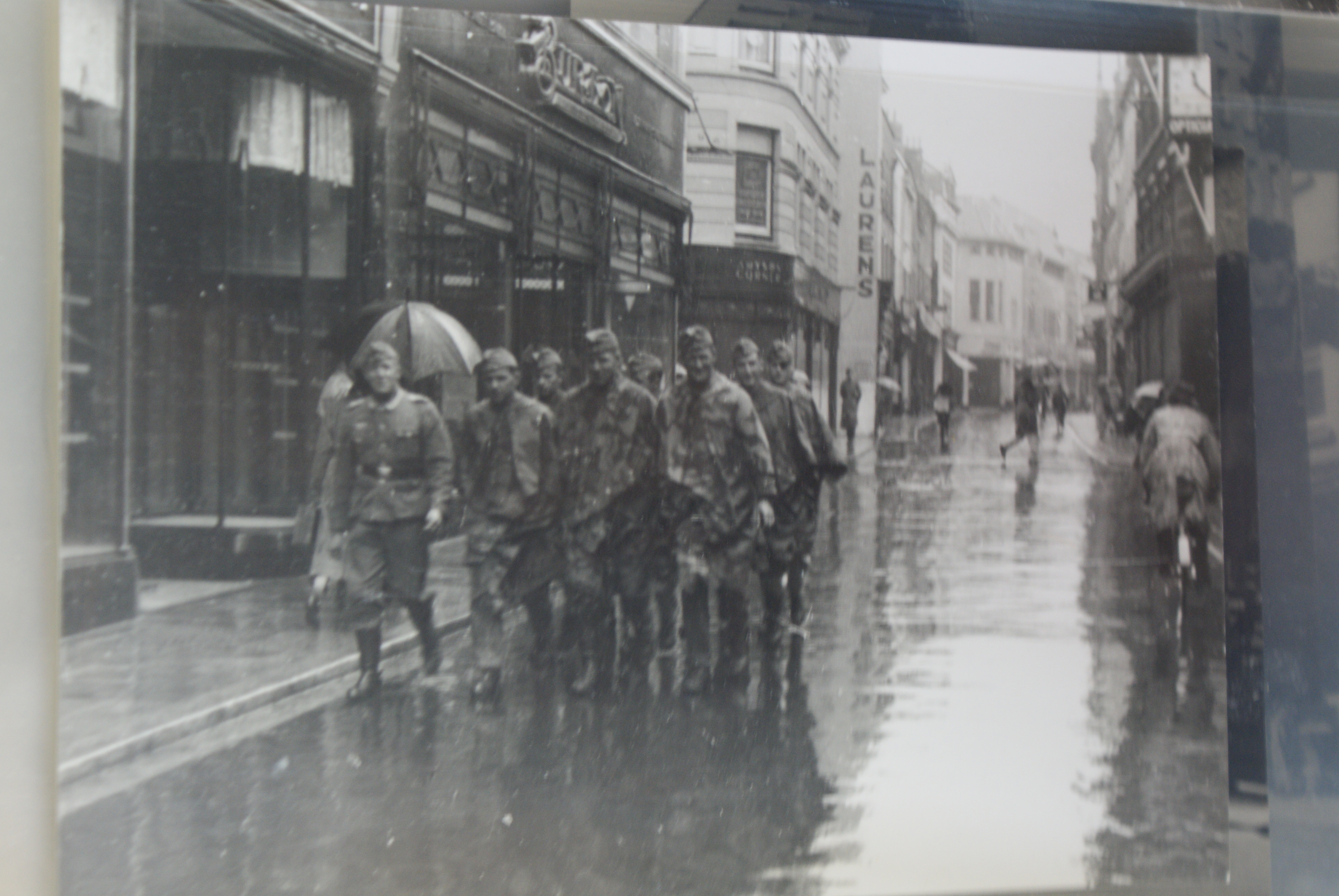
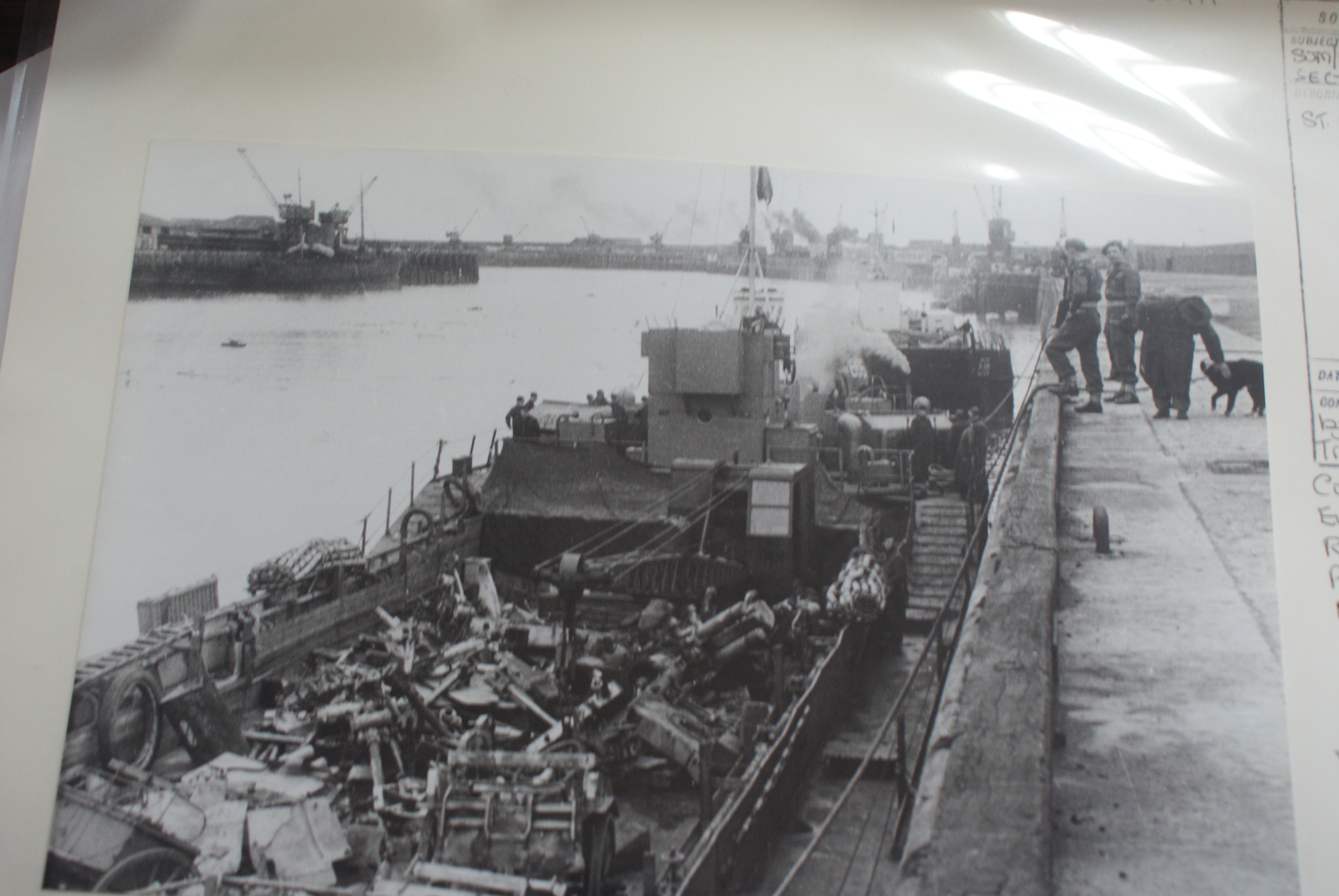
The story of Jersey’s occupation:
The German Occupation of Jersey began one week after the British Government had removed all military forces from the island, fearing the safety of the people who lived there. On the 28th of June, the German air force bombed and machine-gunned multiple sites on the island, not knowing of the demilitarization. The attacks killed 10 people and wounded many more. A few days later, on the 1st of July, Germany dropped an ultimatum from the air demanding the immediate surrender of the island. White flags and crosses were placed in prominent places, and later that day Jersey was taken over by air-borne troops.
With the Germans in power, supplies ran out and left the soldiers and the civilians with very little to make use of. Food shortages on Jersey were finally relieved by the arrival of the Red Cross ship SS Vega, bringing food parcels to Jersey. Before then, substitutes had been used to replace everyday foods, with seawater replacing salt, for instance, and a mixture of parsnip and sugar beet replacing tea. A Red Cross relief ship arrived in Jersey on 30 December with food parcels, and cases of salt, soap and medical supplies. The visits of the Red Cross ship proved a lifeline to the starving islanders.
Hitler ordered the conversion of Jersey into an impregnable fortress. Thousands of slave workers from countries like Russia, Spain, France, Poland, and Algeria built hundreds of bunkers, anti-tank walls, railway systems, as well as many tunnel complexes. All of the fortifications built around the island were part of Hitler’s “Atlantic Wall”. Today, traces of Jersey’s defenses and wartime occupations can be discovered across the island, especially in St. Ouen’s Bay.
The occupation of Jersey lasted for 5 years, starting from 1st of July 1940, and eventually ended on the 9th of May 1945.
To gain some start photos for this theme and to give me an idea of what I could do, I went around town and took images of things which were either part of the war, or places which pictures were taken of during the war which are still there now.
Contact sheets:



Cropping is an important aspect when it comes to editing photos as it can cut out any unwanted factors within your images and make your viewers focus on the things which you want them to focus on.
Image number 1:

I chose this image to start with. This image was taken at Battery Moltke within the underground hallways where the ammo for the guns were kept.


After selecting the crop tool, I pulled the sides in to crop out the stuff I didn’t want. I want the viewers to focus on the hole in the wall, so I cropped out most of the wall around it, leaving in some of the dents and scratches to keep it interesting.

This was my final image after cropping it. However, I still thought that there was too much wall in the image which took the attention away from the hole, so I decided to go back to the crop tool to see if I could make it any better.

A good thing about the crop tool in lightroom is that even after you’ve cropped it, it still keeps the original image for you so if you do want to go back and make changes, it has the whole image left for you just in case. I went and pulled the box more inwards, stopping just at the dent which is in the bottom right side of the image.





Image number 2:





After our visit to Noirmont and producing some black and white edits I moved onto physically editing the photographs in the form of photo-montage. I used a mixture of archival and my own image experiments to create the montages by physically merging the photographs together.
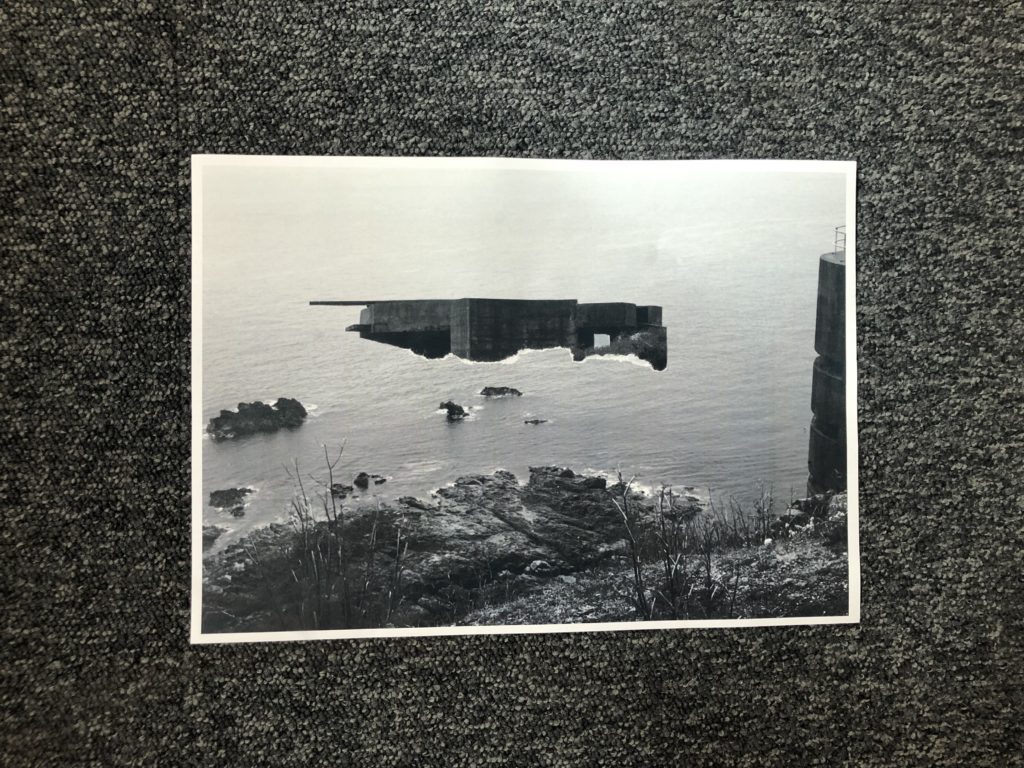
Above shows my first experiment with photo-montage, I used two of my own photographs to generate this final product. I wanted to create the illusion of the structure coming out of the sea. This showing the impact of the use of the water that was used to keep the island under occupation and how it was the German Navy here as well as Soldiers. I feel this experiment went well and I like how that it merges together which is why I chose to use two black and white images so that it would merge easily into one.
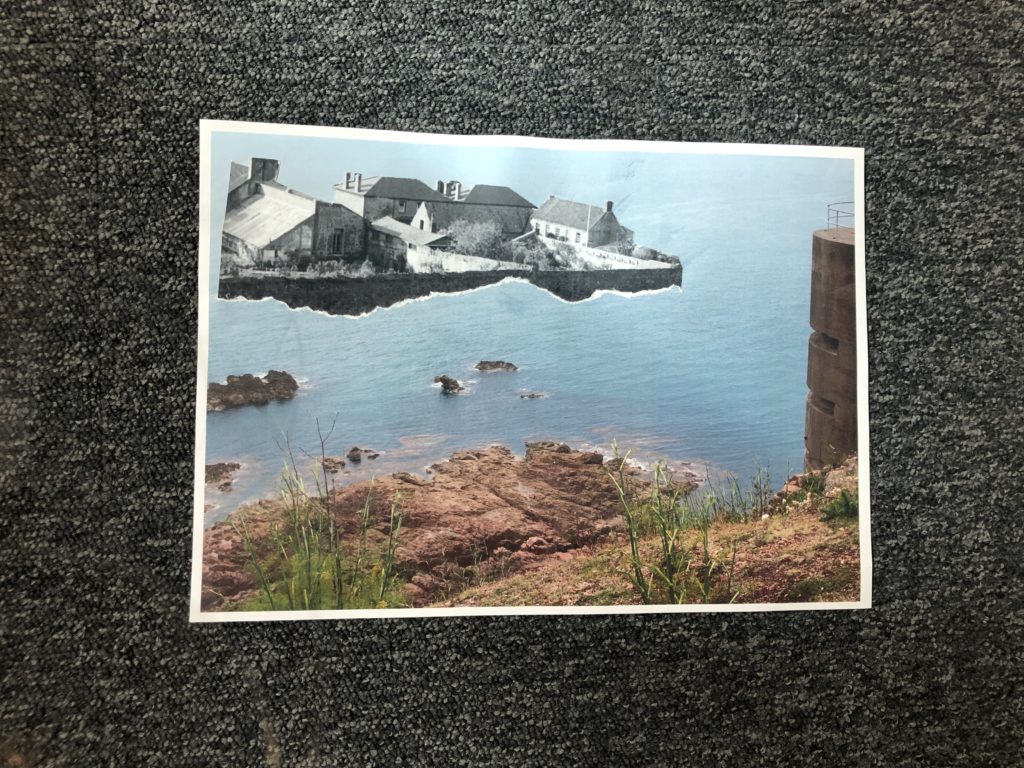
Above shows my second photo-montage experiment, this time using an archival image of the houses and my own image produced at the sight of Noirmont. I like how the archival image was in black and white and my own was in colour as I feel it shows the contrast and makes them stand apart from each other. Although the archival image is from a different place in Jersey and doesn’t necessarily show the buildings related to the occupation I feel I wanted to make a photo-montage of the houses coming out of the water as a hint towards the people are still here with these structures and their houses which were also under occupation.
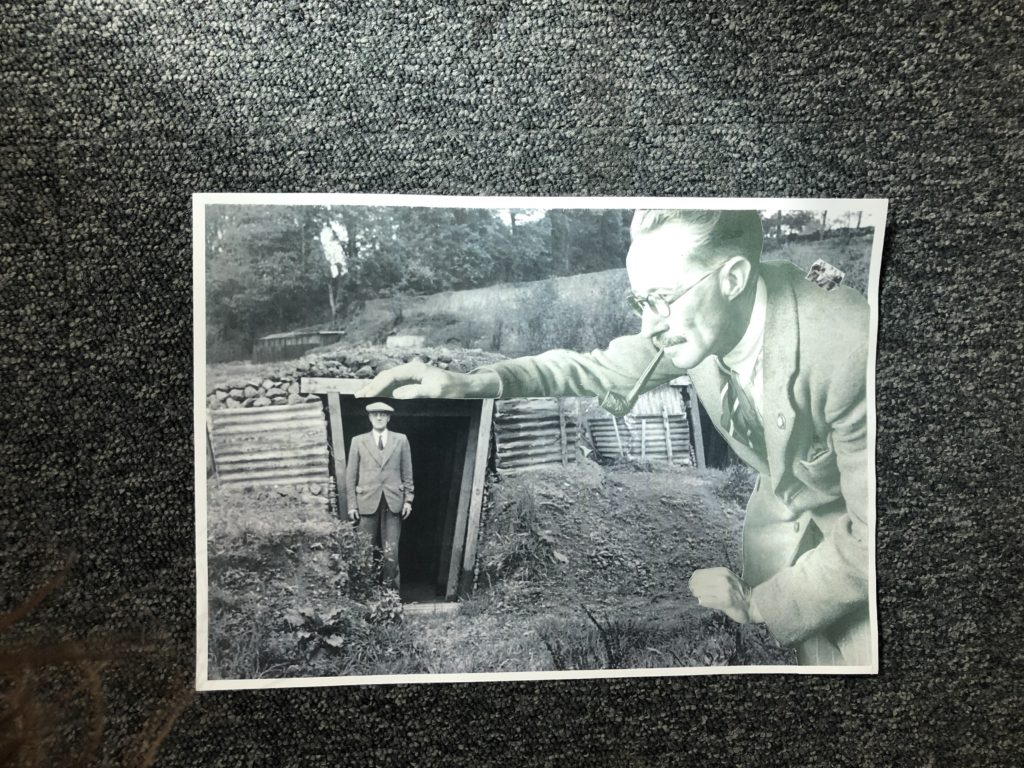
Above shows my last photo-montage experiment, this one I wanted to try something a little different to the last two and I used only archival images to produce this one. I have chosen to have the figure leaning on top of one of the air-raid shelters. I don’t have a clear understanding of who the large figure in the photograph is but my aim was just to try generate the concept of that someone was always in control or on top watching down especially during the occupation, the people of jersey were always being controlled.
Archives are where memories are stored and history is made. An archive can be a collection of historical records or the place they are located. Archives contain primary source documents that have been collected over the course of an individual or organization’s lifetime. They are kept to show past events and can help to show whether these were successful or not. Archivists identify and preserve these documents because of their enduring cultural and historical value. Archives can come in a wide range of formats including written, photographic, moving images, sound, digital and analogue. Archival records are normally unpublished and almost always unique. This means that archives are different from libraries with regards to their functions since books have many identical copies. Archives are important because they can take us much deeper into an event rather than reading a book based on a secondary account of what happened.
The photographic archive of the Société Jersiaise contains over 100,000 images from the mid 1840s to the present day. It is the principal Jersey collection of nineteenth and early twentieth century photography. As Jersey is located between Britain and France (two nations who pioneered photography) the Island has a rich history of photographic practice. The collection has a detailed visual record of developments in Jersey’s landscape and history throughout the photographic era.
The text ‘Archives, Networks and Narratives’ explains how museums aim to serve particular interests, whether it be personal or cultural. Museums are repositories of cultural memories of the past and organize historical narratives of culture. Photography performs a double role within museums because photographs can function as both an artefact on display and as a way to collect the museum and its artefacts, since the photograph is a form of archive. The photographer Roger Fenton was employed to document the British Museum’s artefacts. His photographs create an impression of how it was to see these objects in the Victorian era. With time, his photographs have become famous and feature in museum exhibitions as artefacts.
Contemporary artists and photographers bring new types of imagery to the archives of museums. They contribute different types of images, narratives and aspects of culture, which can be seen in Hiller’s work. After historical events, archives can become a resource so people can rethink what happened. While we tend to think of museums as orientated towards collecting the past, they are also focused towards the present and future.

‘Dedicated to the Unknown Artists’ by Susan Hiller is a collection of around 300 postcards of the coast around Britain. Each postcard presents an image of waves crashing over different parts of the coastline. The images are displayed in grids and have become part of an archival display of how culture sees itself. Together the postcards create an image of Britain being repeatedly attacked by the sea which could metaphorically stand for an invasive force or power. It may also represent an emotional threat by a person or idea where one must create defenses. Hiller celebrates the authors of the postcards which raises the question of their status within culture and social memory. Hiller’s work seems to question whether the postcard images tell us anything important about our popular concept of the British Isles.
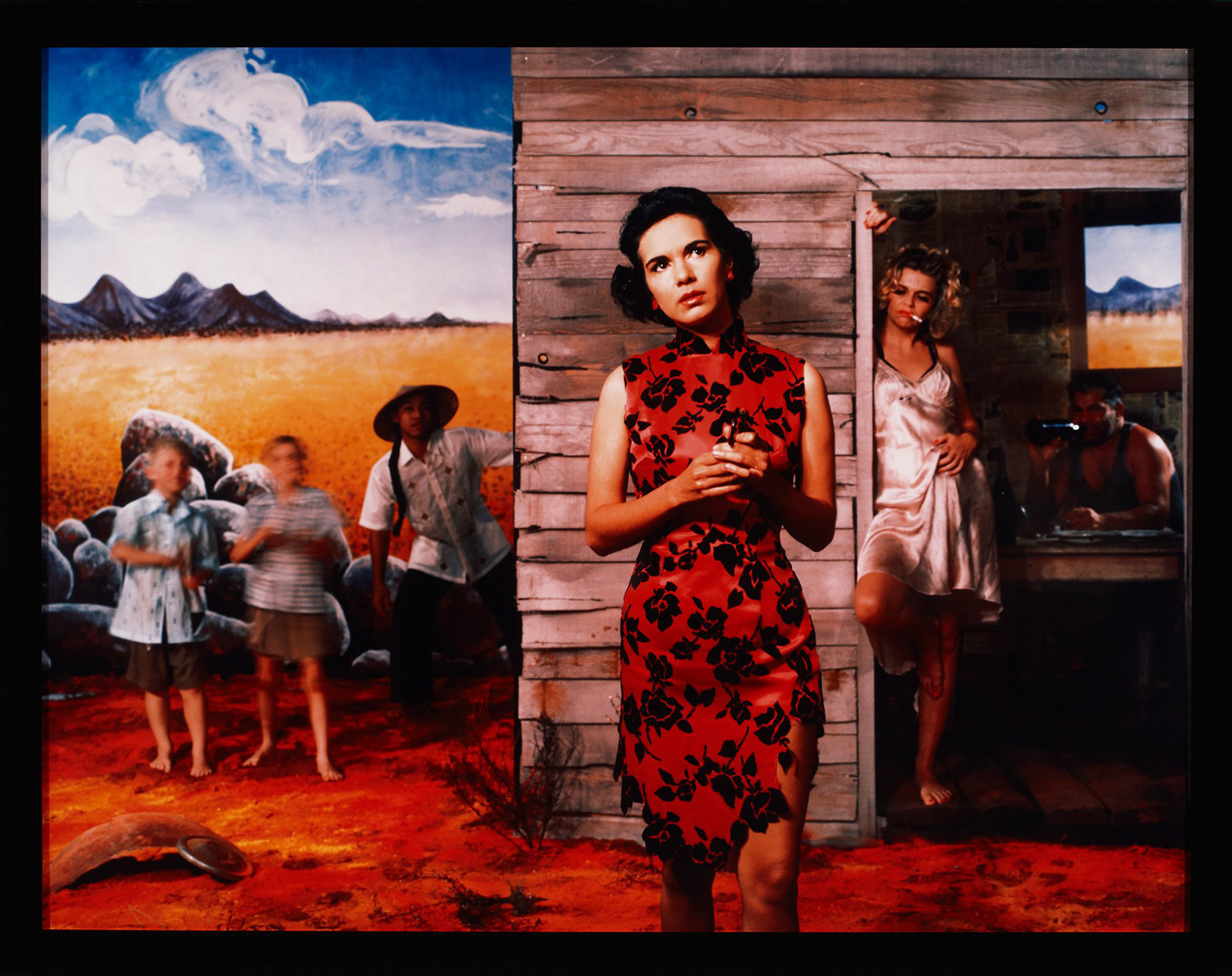
Tracey Moffatt’s series ‘Something More’ presents a fictionalised biographical story of a young Aboriginal woman’s desire to leave her rural life for the city. The background is clearly painted and has a theatrical scene of a rough cabin inhabited by rugged figures, with others in the background. They all stare at a woman in the foreground, who seems indifferent to them. Her urban elegance and dress sets her apart, and she appears to be pondering her future. The following pictures show that this is a disturbing story which ends in violation and death. Moffatt’s early work often takes the form of fictionalised reenactments of personal memories. The National Gallery of Australia now owns this work and has found its way into a national archive. This Aboriginal story of desire and social violence creates an understanding of the past within the present.
The role of Archives has also changed because of new technology. The speed and quantity of visual recording is better today with the internet and the wide availability of camera phones. Nowadays it is easy to send pictures and have access to archives. Anyone can send pictures and texts to others online relating to their social or personal experience. Photography lets anyone collect anything as part of a personal online collection. The internet has not only given more access to archives but has also changed what we think an archive is. However, technology has caused problems with people losing their images by changing their storage systems, losing pen drives etc.
In 1995 the French philosopher Jacques Derrida described ‘archive fever’ as a conflict with the idea of conservation. Conservation is driven by the possibility of forgetting. Since human memory is limited and not everlasting, photographs are associated with the idea of remembering and the desire to return. William Henry Fox Talbot anticipated the purpose of photography as an archival practice, but now photography is clearly a highly popular way to record moments. The human memory is complex and can fuse or compress separate moments together. Turning memories into documents, texts, images and objects, relieves the human brain of the difficulty of recording or remembering things accurately.
Overall archives have a variety of purposes. An educational purpose would be to admire historical artefacts and to gather information from the past. A personal purpose would include storing memories, such as important family events to be kept as a momento. I have learnt the importance of questioning the archival material such as the accuracy of the information, if it might have been influenced by someone’s personal viewpoint, as well as considering what has been left out. Although we are reliant on technology for our personal and public archives, it is important to view photographic archives and museums as an important source of historical material. During my visit to Société Jersiaise, I learnt about the importance of archival photographs. They open a window into the past and give a glimpse of what people’s lives were like during the occupation, as well as showing temporal changes. I am going to use the Jersey archives to enrich my personal study as I am interested in focusing my investigation upon the coastline of Jersey and how it has changed since the Occupation.